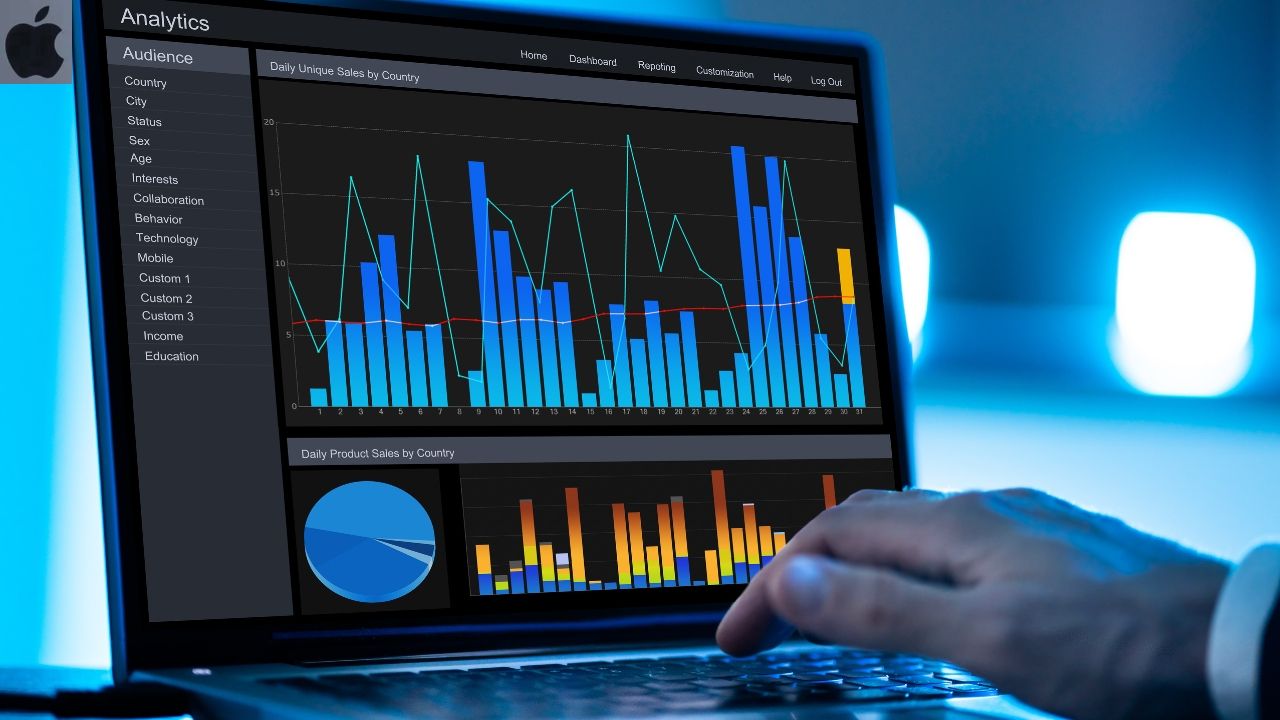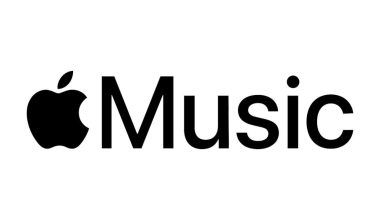In the digital age, understanding and leveraging data is crucial for success in any field, and the music industry is no exception. Apple Music Analytics provides artists with a wealth of data to help them understand their audience and make informed decisions about their music careers. This blog will guide you on how to use Apple Music Analytics to grow your fanbase effectively.
What is Apple Music Analytics?
Apple Music Analytics is a powerful tool provided by Apple that allows artists to track and analyze their music’s performance on the Apple Music platform. It provides insights into various metrics, such as the number of plays, average listening time, and geographical locations of listeners. By understanding these metrics, artists can tailor their strategies to better reach and engage their audience.
Key Features of Apple Music Analytics
- Plays and Listens: This feature shows the total number of plays and listens your tracks have received. Monitoring these numbers helps you gauge the popularity of your songs.
- Geographical Data: Understand where your listeners are located globally. This data is crucial for planning tours and targeting specific regions with marketing efforts.
- Demographics: Insights into the age, gender, and preferences of your listeners. Tailoring your music and marketing strategies to suit these demographics can increase engagement.
- Trends: Identify trends over time, such as peak listening times and the impact of releases on your metrics. This can help in scheduling releases and promotional activities.
How to Access Apple Music Analytics
To access Apple Music Analytics, you need to have an Apple Music for Artists account. Here’s how to get started:
- Sign Up: Visit the Apple Music for Artists website and sign up for an account. You’ll need to verify your identity as an artist.
- Claim Your Profile: Once your account is set up, claim your artist profile to gain access to your analytics dashboard.
- Explore the Dashboard: Familiarize yourself with the dashboard where you can view detailed metrics and reports.
Using Apple Music Analytics to Grow Your Fanbase
1. Identify Your Core Audience
Understanding who your core audience is can help you create music and marketing strategies that resonate with them. Use the demographic data from Apple Music Analytics to identify the age group, gender, and location of your most loyal listeners. By knowing who your true fans are, you can better cater to their preferences and build a stronger connection with them.
For instance, if you notice that a significant portion of your audience is teenagers from urban areas, you might want to focus on themes and topics that resonate with this demographic. Engage with them through social media platforms they frequent and consider collaborating with other artists popular among this age group.
2. Optimize Your Release Strategy
Analyze the trends and patterns in your plays and listens. Identify when your audience is most active and schedule your releases around these peak times to maximize engagement. For example, if you notice a spike in listens on weekends, plan your releases accordingly. This strategic timing can significantly boost your initial play counts and improve your visibility on the platform.
Moreover, consider releasing teasers and snippets leading up to the release date to build anticipation among your listeners. Use the insights from Apple Music Analytics to determine the best times to post these teasers to ensure maximum reach and engagement.
3. Plan Tours and Live Shows
Geographical data can be incredibly useful when planning tours and live shows. Identify the regions where your music is most popular and focus your live performances in these areas. This targeted approach ensures a better turnout and more engaged audience. For example, if your analytics show a large fanbase in New York City, prioritize booking venues and organizing promotional events there.
Additionally, use the data to identify potential new markets where your music is gaining traction. Plan smaller gigs or promotional events in these areas to test the waters and expand your reach. Engaging with fans in person can strengthen your connection with them and convert casual listeners into dedicated supporters.
4. Tailor Your Marketing Campaigns
Use the insights from Apple Music Analytics to tailor your marketing campaigns. If you notice a significant number of listeners from a particular region, run targeted ads and promotions in that area. Customize your content to match the preferences and demographics of your audience. For instance, if you have a strong following in Japan, consider incorporating Japanese culture and language into your marketing materials.
Collaborate with local influencers and media outlets to amplify your reach. Leveraging their established audiences can help you gain credibility and attract new listeners. Additionally, consider translating some of your content into the local language to make it more accessible and relatable to your international fans.
5. Engage with Your Fans
Building a strong connection with your fans is essential for growing your fanbase. Use the data from Apple Music Analytics to understand what your fans like and engage with them accordingly. Respond to their comments, create content that resonates with them, and keep them updated with your latest releases and activities.
Host Q&A sessions, live streams, and virtual concerts to interact with your fans in real time. These activities can help you build a loyal community around your music. Additionally, consider offering exclusive content and perks to your most dedicated fans. This could include early access to new releases, special merchandise, and behind-the-scenes footage.
Advanced Strategies for Using Apple Music Analytics
1. Leveraging Playlist Data
One of the key metrics in Apple Music Analytics is playlist data. Playlists can significantly boost your visibility and attract new listeners. Monitor which playlists your songs are featured on and analyze the performance of these playlists. Identify the curators and reach out to them with your new releases, thanking them for their support and providing updates on your music.
Additionally, consider creating your own playlists featuring your songs alongside tracks from other artists in your genre. Promote these playlists on your social media channels to engage your existing fans and attract new listeners. Encourage your fans to share and follow your playlists to increase their reach.
2. Collaborating with Other Artists
Collaborations can be a powerful way to expand your fanbase. Use Apple Music Analytics to identify artists with a similar audience and reach out to them for potential collaborations. This can include joint tracks, remixes, or even live performances. Collaborating with artists who have a similar fanbase can help you tap into their audience and gain new followers.
When collaborating, ensure that the partnership is mutually beneficial and aligns with your artistic vision. Promote the collaboration across both your and your partner’s social media channels to maximize its impact. By combining your strengths and fanbases, you can create a win-win situation that benefits both parties.
3. Analyzing Song Performance
Delve deep into the performance metrics of your individual songs. Identify which tracks are performing well and which ones are not resonating with your audience. Use this data to inform your future releases. For example, if a particular style or theme is getting more plays and positive feedback, consider incorporating similar elements into your upcoming tracks.
On the other hand, if certain songs are underperforming, analyze the reasons behind it. Is it the genre, the timing of the release, or the lack of promotion? Use these insights to refine your approach and avoid repeating the same mistakes. Continuously experimenting and learning from your analytics can help you improve your music and marketing strategies.
4. Enhancing Listener Retention
Listener retention is a crucial aspect of building a loyal fanbase. Use Apple Music Analytics to track the average listening time of your tracks. Identify the points where listeners tend to drop off and analyze the possible reasons. Is it due to the song’s structure, production quality, or something else?
Use this information to improve your music and keep your listeners engaged from start to finish. Additionally, consider creating playlists and sequences that encourage continuous listening. For example, place your most popular tracks at the beginning of your playlist to hook the listeners and keep them engaged with your other songs.
Case Study: Successful Use of Apple Music Analytics
Example: Independent Artist’s Success Story
Let’s look at the example of an independent artist who successfully used Apple Music Analytics to grow their fanbase. By analyzing the geographical data, the artist discovered a significant listener base in South America. They decided to plan a tour in that region, resulting in sold-out shows and a substantial increase in their fanbase.
Additionally, the artist used demographic data to tailor their marketing campaigns. They noticed that a large portion of their audience was young adults interested in electronic music. Based on this insight, they collaborated with popular electronic music influencers and created content that resonated with this demographic. As a result, their social media engagement and streaming numbers saw a significant boost.
The artist also leveraged playlist data to gain more visibility. By identifying key playlists that featured their tracks, they reached out to the curators and built strong relationships. This led to their music being featured more frequently on popular playlists, attracting new listeners and increasing their overall streams.
Tips for Maximizing Apple Music Analytics
- Regular Monitoring: Regularly monitor your analytics to stay updated with the latest trends and patterns. This helps in making timely adjustments to your strategies.
- Experimentation: Don’t be afraid to experiment with different types of content and release strategies. Use the data to see what works best and refine your approach accordingly.
- Collaborations: Collaborate with artists who have a similar audience. Use Apple Music Analytics to identify potential collaborators and tap into their fanbase.
- Exclusive Content: Offer exclusive content to your most loyal listeners. This could be in the form of early releases, behind-the-scenes footage, or special merchandise.
Common Mistakes to Avoid When Using Apple Music Analytics
- Ignoring Data: One of the biggest mistakes artists make is not utilizing the data provided by Apple Music Analytics. Ignoring these insights can lead to missed opportunities for growth and engagement.
- Focusing Only on Vanity Metrics: While it’s exciting to see high play counts, it’s essential to focus on deeper metrics like listener retention, demographics, and geographical data. These provide more actionable insights.
- Not Regularly Updating Marketing Strategies: The music industry is dynamic, and so should be your marketing strategies. Regularly updating and tweaking your strategies based on the latest data ensures you stay relevant and effective.
- Overlooking Small Markets: Sometimes, niche markets can provide a significant boost. Don’t overlook smaller markets where you might have a dedicated fanbase. These markets can often lead to strong word-of-mouth promotion.
- Failing to Engage with Your Audience: Analytics can tell you a lot about your audience, but engagement is key to keeping them. Regular interaction and providing content that resonates with them are crucial.
Advanced Analytics Tools and Integrations
1. Third-Party Analytics Tools
In addition to Apple Music Analytics, consider integrating third-party analytics tools like Chartmetric and Soundcharts. These tools offer additional insights and comparative data across multiple platforms, giving you a more comprehensive view of your music’s performance.
Combine the insights from Apple Music Analytics with data from social media platforms. Tools like Hootsuite and Sprout Social can help you understand how your music is being discussed and shared on social media. This combined approach can help you create more targeted and effective marketing campaigns.
3. Website and Email Analytics
If you have a website or use email marketing, tools like Google Analytics and Mailchimp’s analytics can provide valuable insights. Track how fans are interacting with your website and emails, and use this data to enhance your digital presence and communication strategies.
The Future of Music Analytics
As technology continues to evolve, the future of music analytics looks promising. With advancements in AI and machine learning, tools like Apple Music Analytics are expected to become even more powerful and intuitive. These advancements will provide artists with deeper insights and more accurate predictions, enabling them to make smarter decisions.
Potential Future Features
- Predictive Analytics: Using historical data to predict future trends and listener behavior.
- Enhanced Collaboration Tools: Features that help artists find and connect with potential collaborators based on data.
- Real-Time Data: More real-time analytics to allow for quicker adjustments and more dynamic marketing strategies.
- Comprehensive Fan Insights: Detailed insights into fan behavior across all platforms, providing a holistic view of fan engagement.
Conclusion
Apple Music Analytics is an invaluable tool for artists looking to grow their fanbase. By understanding and leveraging the data provided, you can make informed decisions that enhance your music career. Regularly use the insights from Apple Music Analytics to optimize your strategies, engage with your audience, and ultimately, expand your fanbase.
Remember, success in the music industry is not just about creating great music; it’s also about understanding your audience and effectively reaching out to them. Apple Music Analytics provides you with the tools to do just that. Start analyzing your data today and take the next step in your musical journey.
Related Article:
For additional resources on music marketing and distribution, visit Deliver My Tune






